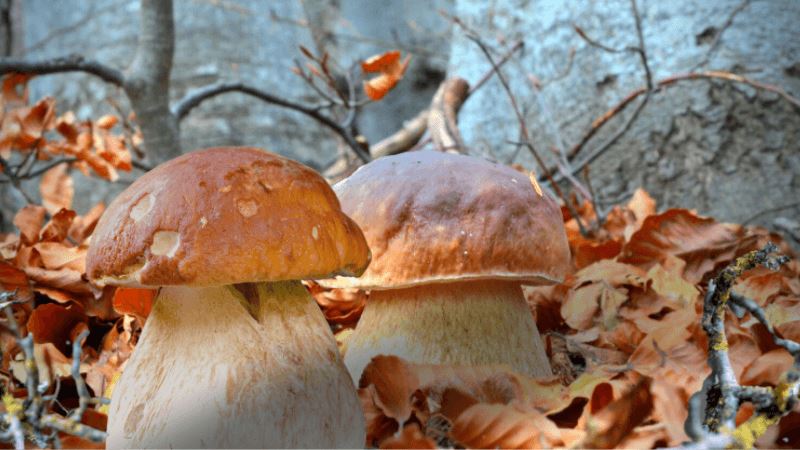Where are Porcinis Found?
Where to find Porcini Mushrooms
We love porcini mushrooms for their pungent, woodsy flavor and the fact that despite that depth of flavor, they are still incredibly versatile. It’s no wonder why folks venture into the forests in droves looking for them around this time of year. More and more, folks are turning to the internet to help advise on exactly when and where to find wild mushrooms.
In this article, we are going to help you determine where you can wild-harvest porcini mushrooms and provide some identification tips. We do want to point out, though, that harvesting wild mushrooms can be a dangerous activity, due to the toxicity of certain varieties of fungus, so we advise you to never rely solely on the information you have found on the internet, but instead, use it as a guide. Before consuming any wild harvest, ensure you are absolutely positive you have the species in question. It’s best to consult experts in your area for an in-person second opinion until you are fully confident in your findings.
Finding Porcini Mushrooms in the Wild
Where are porcini’s found?
Wild porcinis can be found on forest floors globally. Like morels and truffles, they have a symbiotic relationship with certain tree species, such as hemlock, birch, pine, and spruce. As such, they are mostly found near the base of these trees.
Identifying features of porcinis:
The first thing you’ll notice about porcini mushrooms is their lack of gills. This particular species of fungus possesses pores and is more sponge-like than more familiar types of mushrooms like portabellas, oysters, and chanterelles. Secondly, the stem of the porcini is cylindrical and solid. The outward appearance of the stem often seems to contain an almost lace-like design, but If you were to cut into the mushroom lengthwise, you would discover a solid white mass from stem to cap. Finally, if you are hoping to identify the mushroom by looking at the cap color, you might be sorely surprised. A porcini will change color from the time it first fruits until peek maturity. Starting white, transitioning to tan, and quite often growing into brown or even copper in appearance.
How to determine if a porcini is good for eating
If you venture into the woods looking for porcinis, you will likely discover varying degrees of freshness. They have a very short season and are easily infested with insects—they are quite delicious, so we can’t blame them for wanting a little nibble for themselves. They also make a wonderful nesting location for such insects, who quite often lay their eggs inside. So don’t be surprised if you find larvae in some of your wild-harvested delights. While this doesn’t bother some foragers, who simply trim their mushrooms and discard the already feasted-upon parts, those with weaker stomachs might want to choose the more appealing option of sourcing their mushrooms from reputable vendors. Either way, a porcini should be firm. If they are mushy or feel slimy, they are either well beyond their prime or have been seriously invaded to a point of no return. Leave those ones in the forest or, as previously mentioned, find a reputable purveyor for your sourcing your porcinis.







Slofoodgroup
Author